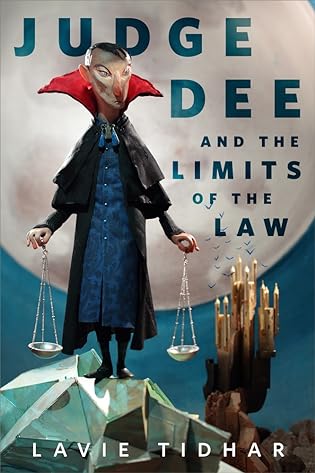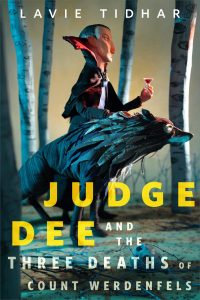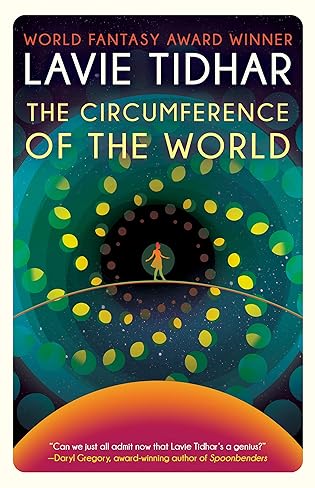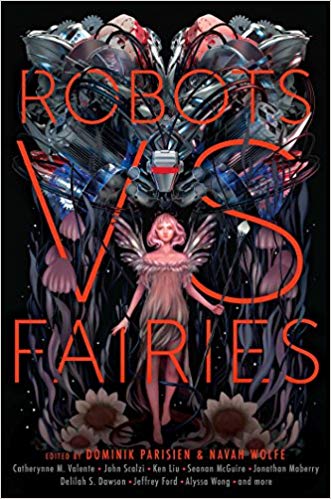 Judge Dee and the Limits of the Law (Judge Dee, #1) by Lavie Tidhar
Judge Dee and the Limits of the Law (Judge Dee, #1) by Lavie Tidhar Format: ebook
Source: purchased from Amazon
Formats available: ebook
Genres: fantasy, horror, paranormal, short stories, vampires
Series: Judge Dee #1
Pages: 32
Published by Tor Books on November 11, 2020
Purchasing Info: Author's Website, Publisher's Website, Amazon, Barnes & Noble, Kobo, Better World Books
Goodreads
No vampire is ever innocent…
The wandering Judge Dee serves as judge, jury, and executioner for any vampire who breaks the laws designed to safeguard their kind’s survival. This new case in particular puts his mandate to the test.
My Review:
I’m not quite sure what I was expecting when I picked this up, but what I got was kind of interesting and sorta cute and blissfully short yet still told a good story and somehow managed to fit – albeit weirdly and oddly – into the whole Judge Dee rabbit hole I fell down last week.
Like many vampire stories, it needs a human touch. And it has one in this case, as it is told by vampire Judge Dee’s current human assistant, Jonathan. Who is often just a bit hard done by the Judge, as poor Jonathan needs the occasional meal of real food, and the occasional break to catch his labored breath, while the vampire clearly does not. And sometimes forgets to care.
That the human is a considerably messier eater than the average vampire, let alone the rather fastidious Judge Dee, is just part of the byplay between these two unequal companions.
The story here still manages to display Judge Dee’s much vaunted ability to, well, judge evildoers within the limits of the law and render a fit punishment – when punishment is what’s due.
The case that introduces this pair to readers is just such a case – more convoluted that one might expect leading to a rather elegant ending – and not the one the reader expects when Judge Dee first knocks on the door.
Escape Rating B: I picked this up this week for two reasons. The first is part of the reason I grabbed this at all, that I fell down a reading rabbit hole about Judge Dee and discovered this series and simply couldn’t resist. A lack of resistance that may have had something to do with the cover art which is just this side of comic but bizarre in a way that pulled me in.
The second reason, and the why right now reason, is that these are blissfully short. I’ve overcommitted myself this week and needed that really, really badly.
But I’ll admit that I wasn’t expecting a lot, because there is literally not a lot here. Howsomever, I got more than I expected.
Judge Dee does his damndest to stick to the letter of the law while leaning over it just enough to find justice in a situation where there might not have been any to find. He’s beyond clever and yet is amused when a potential defendant before his traveling bench manages to out-clever him.
 What makes the story fun – more than fun enough that I’ll be picking up the next story the next time I need something short to tide me over an overcommitted calendar – is the first person perspective of poor, put upon, Jonathan. He’s snarky, he’s both world-weary and vampire-weary, but he’s always aware of the side on which his bread is buttered – when he can get any, that is. So his commentary covers the Judge, the law he administers, his opinions and predilections, but also the companionship they provide each other.
What makes the story fun – more than fun enough that I’ll be picking up the next story the next time I need something short to tide me over an overcommitted calendar – is the first person perspective of poor, put upon, Jonathan. He’s snarky, he’s both world-weary and vampire-weary, but he’s always aware of the side on which his bread is buttered – when he can get any, that is. So his commentary covers the Judge, the law he administers, his opinions and predilections, but also the companionship they provide each other.
Along with Jonathan’s constant scramble to get enough food in his belly to keep him upright for another day trudging after the indefatigable vampire Judge Dee. And one of these days soon I’ll be, not trudging but skipping along right beside him with Judge Dee and the Three Deaths of Count Werdenfels.

 The Circumference of the World by
The Circumference of the World by  Robots vs. Fairies by
Robots vs. Fairies by